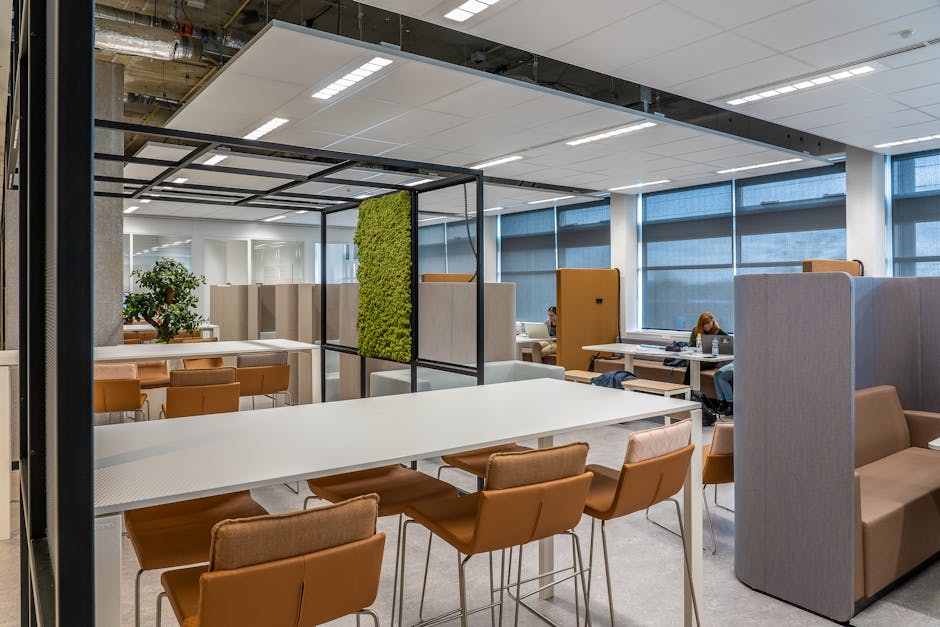Unlocking Workplace Potential: The Power of Occupancy Analytics
“Explore the transformative impact of occupancy analytics on workplace management. Learn how data-driven insights can help organizations make informed decisions about office space, enhance employee experience, and drive cost-efficiency in the era of flexible work arrangements. ”

Unlocking Workplace Potential: The Power of Occupancy Analytics
In today's dynamic business landscape, workplace leaders are increasingly turning to data-driven solutions to optimize their office environments. Among these solutions, occupancy analytics stands out as a powerful tool for enhancing workplace efficiency, productivity, and cost-effectiveness. Let's delve into how this innovative approach is reshaping the modern workplace.
Understanding Occupancy Analytics
Occupancy analytics refers to the collection and analysis of data related to how office spaces are used. This includes tracking employee attendance, space utilization, and movement patterns within the workplace. By leveraging this information, organizations can make informed decisions about their real estate portfolio, workplace policies, and resource allocation.

The Benefits of Implementing Occupancy Analytics
1. Optimizing Space Utilization
One of the primary advantages of occupancy analytics is its ability to help organizations optimize their office space. By analyzing data on how different areas of the workplace are used, companies can:
- Identify underutilized spaces and repurpose them for more productive uses
- Design more efficient floor plans that cater to employee needs
- Make data-driven decisions about expanding or downsizing office space
2. Enhancing Employee Experience
Occupancy data can provide valuable insights into employee preferences and behaviors. This information can be used to:
- Create a more comfortable and productive work environment
- Implement flexible seating arrangements that promote collaboration
- Ensure that employees have access to the resources they need when they're in the office
3. Supporting Flexible Work Policies
As more organizations adopt hybrid work models, occupancy analytics becomes crucial for managing flexible work arrangements. It can help:
- Determine optimal office capacity for different days of the week
- Implement desk rotation systems that maximize space efficiency
- Track attendance patterns to ensure compliance with return-to-office policies
4. Driving Cost Efficiency
By providing a clear picture of how office space is being used, occupancy analytics enables organizations to:
- Reduce real estate costs by identifying opportunities for consolidation
- Optimize energy usage based on occupancy patterns
- Make informed decisions about facilities management and maintenance schedules
Implementing Occupancy Analytics in Your Workplace
To successfully implement occupancy analytics, consider the following steps:
-
Choose the Right Tools: Select a workplace analytics platform that integrates with your existing systems and provides the insights you need.
-
Define Clear Objectives: Determine what you want to achieve with occupancy analytics, whether it's cost reduction, improved collaboration, or enhanced employee satisfaction.
-
Collect Relevant Data: Implement sensors, badge systems, or other technologies to gather accurate occupancy data.
-
Analyze and Act on Insights: Regularly review the data collected and use it to inform workplace strategy decisions.
-
Communicate with Stakeholders: Share insights and plans with employees and executives to ensure buy-in and transparency.

Overcoming Challenges in Occupancy Analytics Implementation
While the benefits of occupancy analytics are clear, there are some challenges to consider:
- Privacy Concerns: Ensure that data collection methods respect employee privacy and comply with relevant regulations.
- Data Accuracy: Implement reliable data collection methods to ensure the insights you're acting on are accurate.
- Change Management: Prepare for potential resistance to new systems and be ready to demonstrate the value of occupancy analytics to all stakeholders.
The Future of Workplace Management
As we look to the future, occupancy analytics will play an increasingly important role in shaping highly effective workplace strategies. By providing real-time insights into how spaces are used, it will enable organizations to create more agile, responsive, and employee-centric work environments.

Conclusion
Occupancy analytics is more than just a trend—it's a fundamental shift in how we approach workplace management. By harnessing the power of data, organizations can create smarter, more efficient workplaces that adapt to the changing needs of their workforce. As we continue to navigate the complexities of modern work arrangements, those who embrace occupancy analytics will be well-positioned to thrive in the workplace of the future.
By implementing occupancy analytics, workplace leaders can unlock the full potential of their office spaces, driving productivity, enhancing employee satisfaction, and achieving significant cost savings. As we move forward, the insights provided by occupancy data will be invaluable in creating workplaces that are not just spaces to work, but strategic assets that contribute to organizational success.